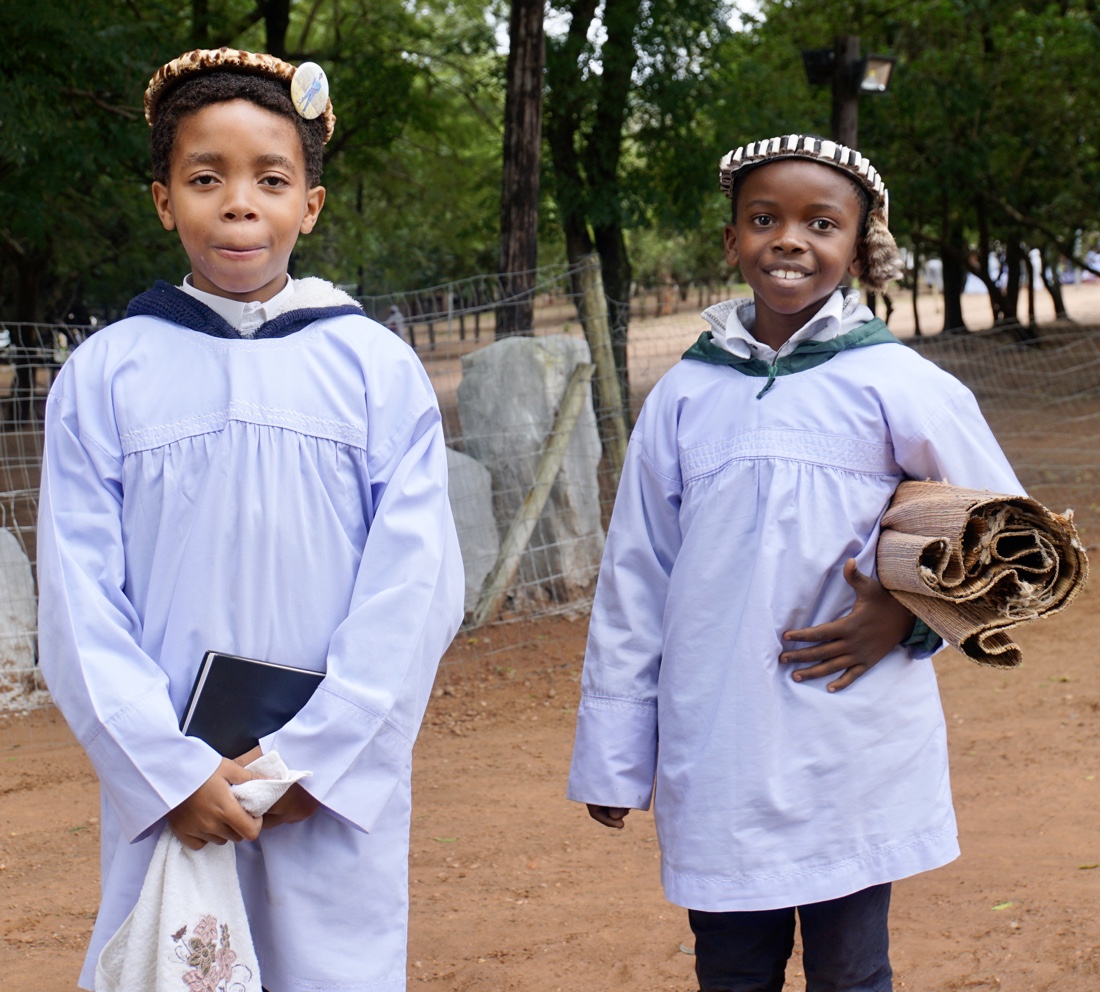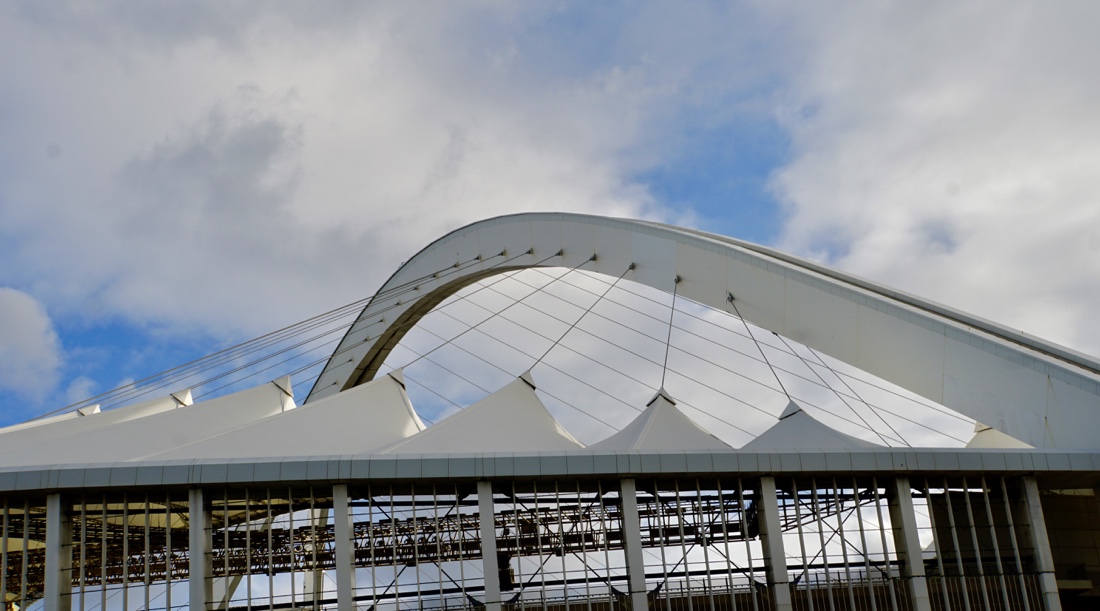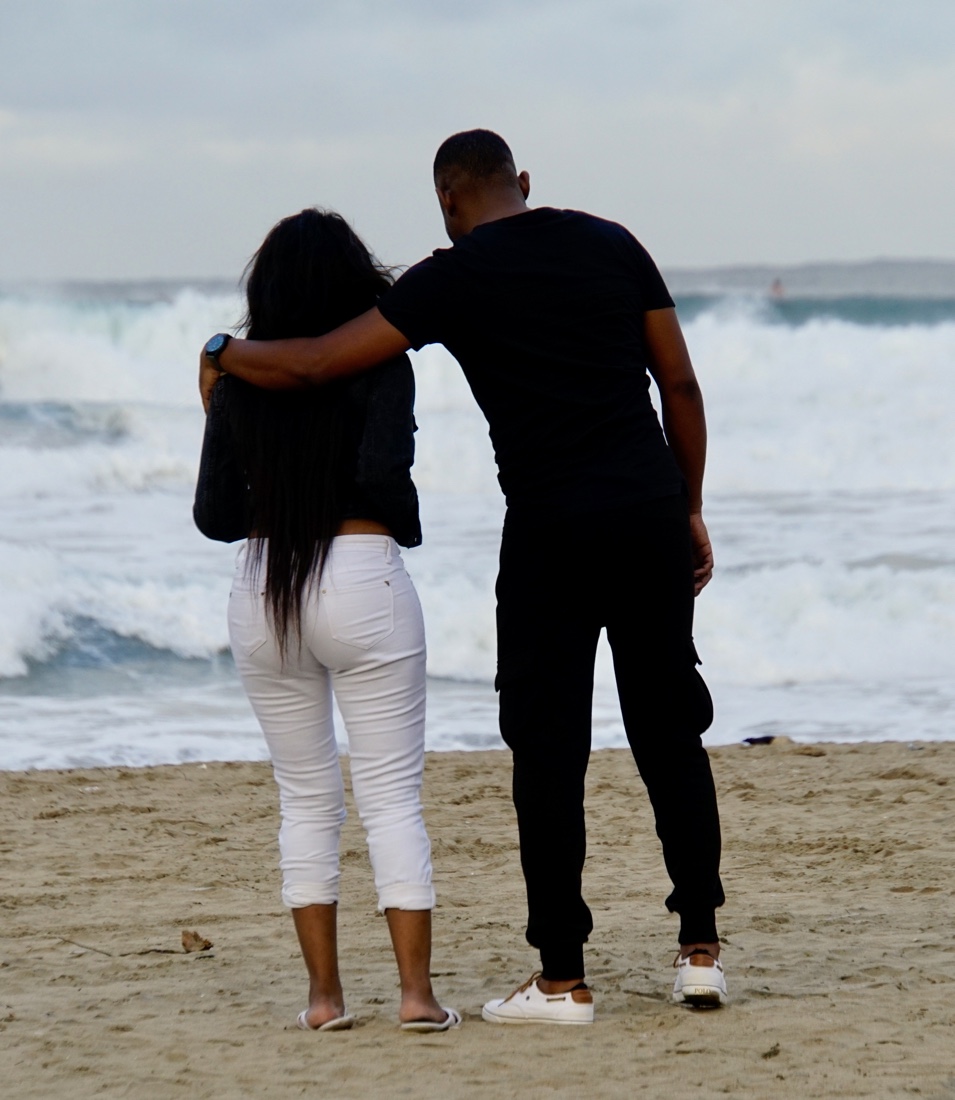April 6.
This morning we visit the Ebuhleni ba Manazaretha Shembe Church. It looks like rain, but it appears to us to be a huge crowd of about 1000 people, seated on mats in a grove of trees, barefoot and dressed in robes to hear and participate actively in the service led by a major Shembe leader, Umvangeli. People we talk to say that the attendance is 1/4 or 1/10 of what it would normally be because of the threat of rain.








 The Shembe Religion was founded by Isaiah Mloyiswa Mdliwamafa Shembe (c.1865– 2 May 1935) and was the largest African-initiated church in Africa during his lifetime. A self-styled prophet who claimed to have been sent directly by God, Shembe started his religious career as an itinerant evangelist and faith healer in 1910. Within ten years he had built up a large following in Natal with dozens of congregations across the province. Although the Nazarites were eventually eclipsed in size by several other Zionist Churches, the Nazarite church eventually had well over one million members before it began to splinter into competing groups in the 1980s.
The Shembe Religion was founded by Isaiah Mloyiswa Mdliwamafa Shembe (c.1865– 2 May 1935) and was the largest African-initiated church in Africa during his lifetime. A self-styled prophet who claimed to have been sent directly by God, Shembe started his religious career as an itinerant evangelist and faith healer in 1910. Within ten years he had built up a large following in Natal with dozens of congregations across the province. Although the Nazarites were eventually eclipsed in size by several other Zionist Churches, the Nazarite church eventually had well over one million members before it began to splinter into competing groups in the 1980s.
After the Shembe service (about an hour and a half), we drove over to see the impressive shark-shaped stadium and then down to the beach to see large sand castles, skate boarders, young ladies posing for photos and people just hanging out on the beach.




 While many people may not be aware of this fact, Durban has the highest concentration of Indians outside of India. Indians from north and south India first began arriving in the Port of Natal from India in 1860. Unlike East Africa, where almost none of the emigrants took to agriculture, in South Africa indentured labor was primarily provided for agriculture and as servants, cooks, watchmen and builders at the Natal-Transvaal Railways. There were two waves of Indian emigration to South Africa; the first being indentured labor brought by the British to work in the sugar cane fields of Natal, and the second was in the form of paid passengers, who were mainly Gujarati Muslim and Hindu businessmen traveling to Africa. Indentured labor, a modern form of slavery tied a worker to an employer by contract (usually for five years) in return for wages and the cost of passage. After 1917, the majority of the laborers stayed back and became land owners on Durban’s east coast and diversified into other fields. By the 1940s, the next generation became the backbone of the emerging industrial working class in KwaZulu- Natal.
While many people may not be aware of this fact, Durban has the highest concentration of Indians outside of India. Indians from north and south India first began arriving in the Port of Natal from India in 1860. Unlike East Africa, where almost none of the emigrants took to agriculture, in South Africa indentured labor was primarily provided for agriculture and as servants, cooks, watchmen and builders at the Natal-Transvaal Railways. There were two waves of Indian emigration to South Africa; the first being indentured labor brought by the British to work in the sugar cane fields of Natal, and the second was in the form of paid passengers, who were mainly Gujarati Muslim and Hindu businessmen traveling to Africa. Indentured labor, a modern form of slavery tied a worker to an employer by contract (usually for five years) in return for wages and the cost of passage. After 1917, the majority of the laborers stayed back and became land owners on Durban’s east coast and diversified into other fields. By the 1940s, the next generation became the backbone of the emerging industrial working class in KwaZulu- Natal.
By 1936 there were 219,925 Indians in South Africa, half of whom were born in the country. Mahatma Gandhi, who arrived in 1893 as a lawyer, played an integral role in South Africa’s political transformation. He was part of the formation of a unified Indian identity and in 1894 he formed South Africa’s first Indian political organization, the Natal Indian Congress (NIC).
Indians were considered non-whites during apartheid and thus they also felt the effects of stringent rules put in place against all black persons. They were forcibly moved into Indian townships, they could not enter certain stores, use particular beaches, marry outside their race and even walk on some roads.
Today Indians make up about 2.5% of the population in South Africa and have contributed to not only the diversity of the country but also the economy. A number of prominent Indian South Africans have emerged from the east coast including previous South African cricket captain, Hashim Amla and political activist Kader Asmal. Local food in Durban, including the iconic “bunny chow”, has been created by Indian people and many famous curry spots in Durban are run by Indians. Indians also runs a large number of businesses in Durban and can still be found in former Indian areas like Phoenix, Chatsworth and Overport.
In a tip of the hat to,the Indian population, we enjoyed a terrific Indian dinner.

Great photos, Dadz. I’ll show them to Max in the am. He’ll be very impressed with the sand castle and the skateboarder!
L,
W.